San Antonio Economic Indicators

| San Antonio economy dashboard (February 2025) | |||
| Job growth (annualized) Nov. '24–Feb. '25 |
Unemployment rate |
Avg. hourly earnings |
Avg. hourly earnings growth y/y |
| 1.4% | 3.8% | $31.10 | 7.9% |
San Antonio payrolls and wages grew in February. Retail sales tax revenue fell sharply after rising in January, and unemployment ticked up.
Business-cycle index
The San Antonio Business-Cycle Index, a gauge of economic conditions in the metro area, increased an annualized 0.7 percent in February (Chart 1).
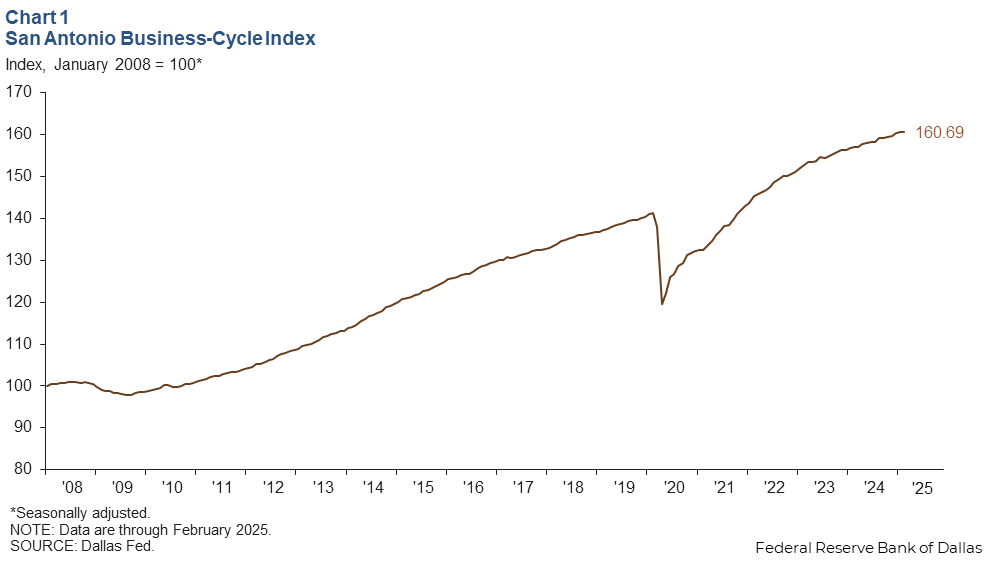
Labor market
Employment growth continues
San Antonio payrolls rose in February, growing an annualized 0.3 percent (300 jobs). Payrolls grew 1.4 percent (4,300 jobs) November through February, led by gains in education and health services (6.7 percent, or 3,000 jobs), government (3.0 percent, or 1,400 jobs), and trade, transportation and utilities (0.9 percent, or 500 jobs) (Chart 2). The manufacturing, leisure and hospitality, information, other services, financial activities and federal government sectors lost jobs. Year over year, total nonfarm employment growth in San Antonio was 1.6 percent, faster than gains in Texas (1.4 percent) and the U.S. (1.2 percent).
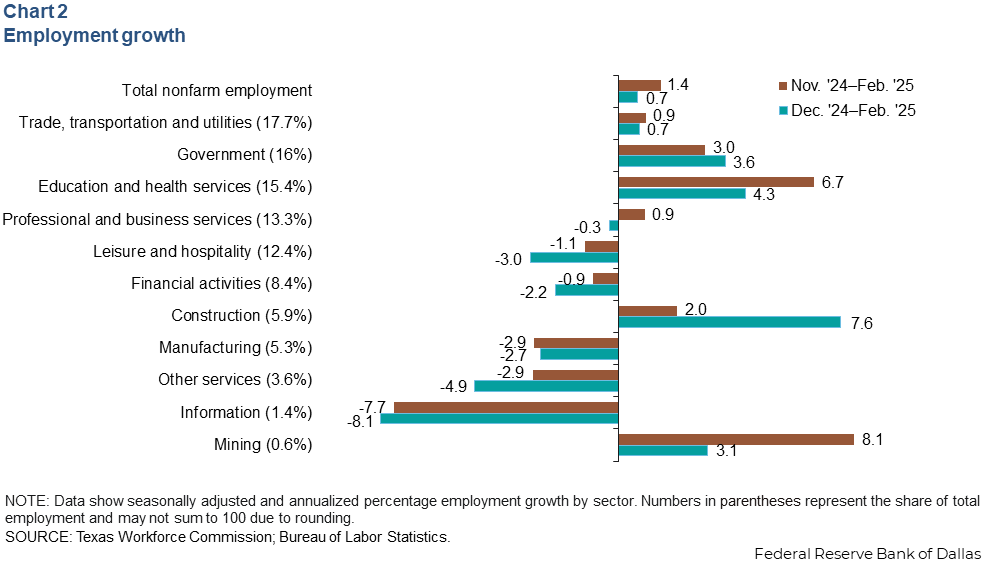
Unemployment rate ticks up
The San Antonio unemployment rate rose to 3.8 percent in February (Chart 3). The jobless rate in Texas remained at 4.1 percent, and the U.S. rate edged up to 4.1 percent.
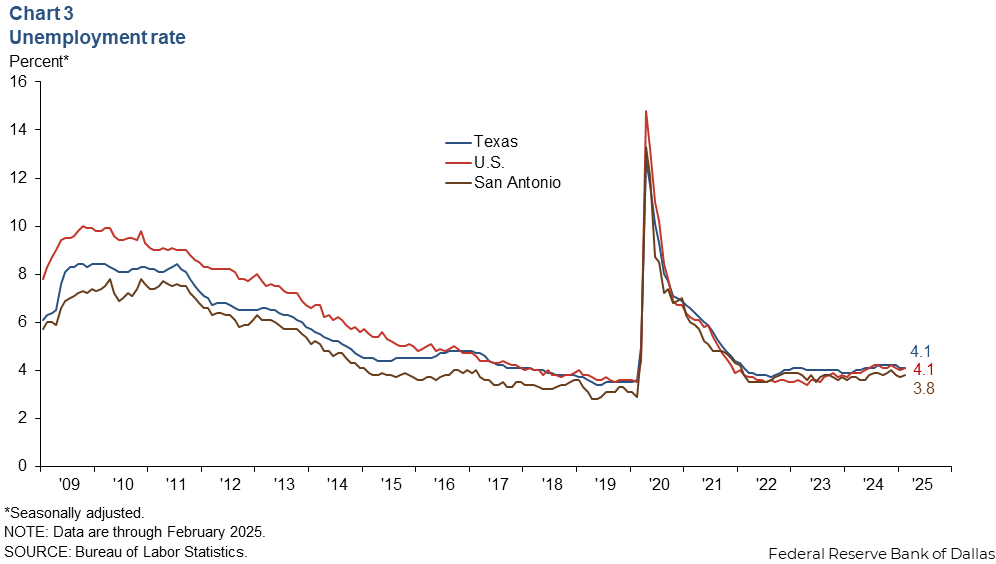
Wages rise
The average hourly wage in San Antonio rose to $31.47 in February from January’s $30.97. The three-month moving average of San Antonio wages grew an annualized 10.9 percent in February, while Texas smoothed wages rose 8.5 percent, and U.S. smoothed wages increased 3.6 percent. Smoothed hourly wages in San Antonio were $31.10, below both the state and national averages (Chart 4). Year over year, wages in San Antonio rose 7.9 percent—greater than the increases in Texas (5.3 percent) and the U.S. (4.0 percent).
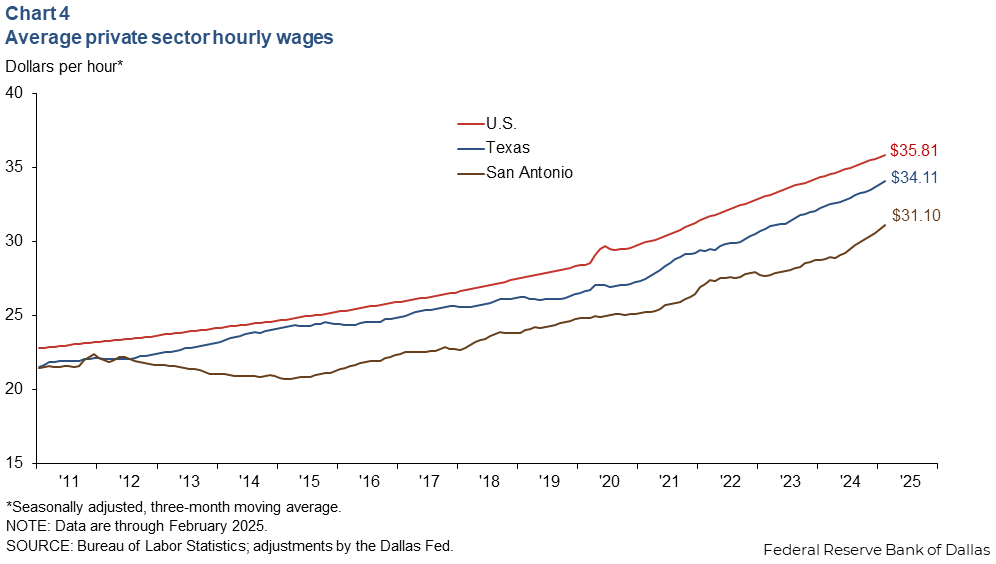
Consumer spending
Sales tax receipts are a proxy for consumer spending patterns. San Antonio sales tax revenue, adjusted for inflation, fell 14.7 percent in February, and Texas sales tax revenue increased 1.9 percent (Chart 5). Year over year, San Antonio sales tax revenue decreased 6.5 percent, while the state’s sales tax revenue rose 8.5 percent.

Top export markets
Current trade tensions between the U.S. and Canada could affect San Antonio exports. According to a recently published note from the Canadian Chamber of Commerce, San Antonio was the top U.S. exporting metro to Canada in 2023, with 48 percent of its exports headed to its northern neighbor (Chart 6). These exports accounted for 3.4 percent of the metro’s GDP and included energy and machinery. Mexico ranked as the second top export market, with $3.1 billion in exports.
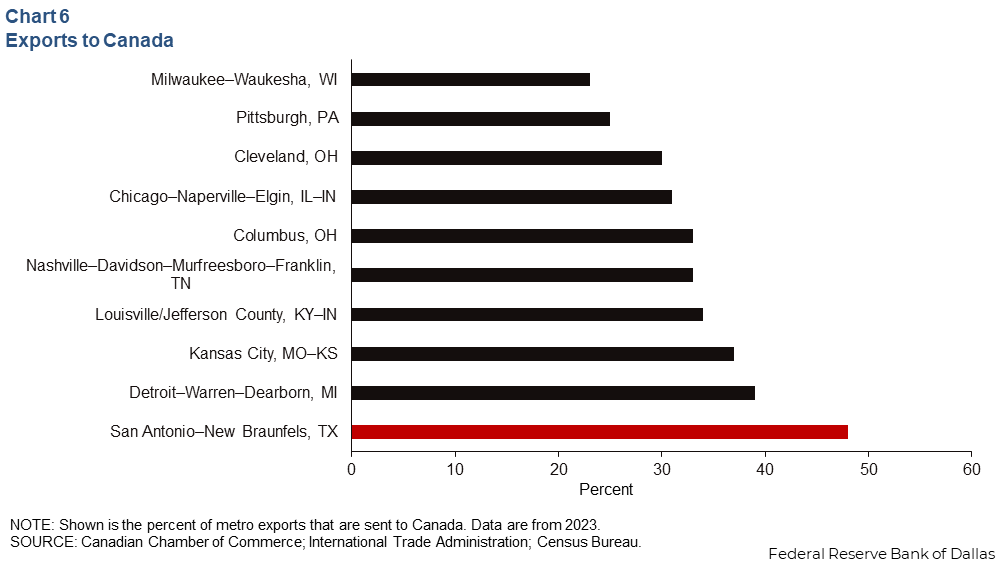
NOTE: Data may not match previously published numbers due to revisions.
About San Antonio Economic Indicators
Questions or suggestions can be addressed to Ethan Dixon at Ethan.Dixon@dal.frb.org. San Antonio Economic Indicators is published every month during the week after state and metro employment data are released.